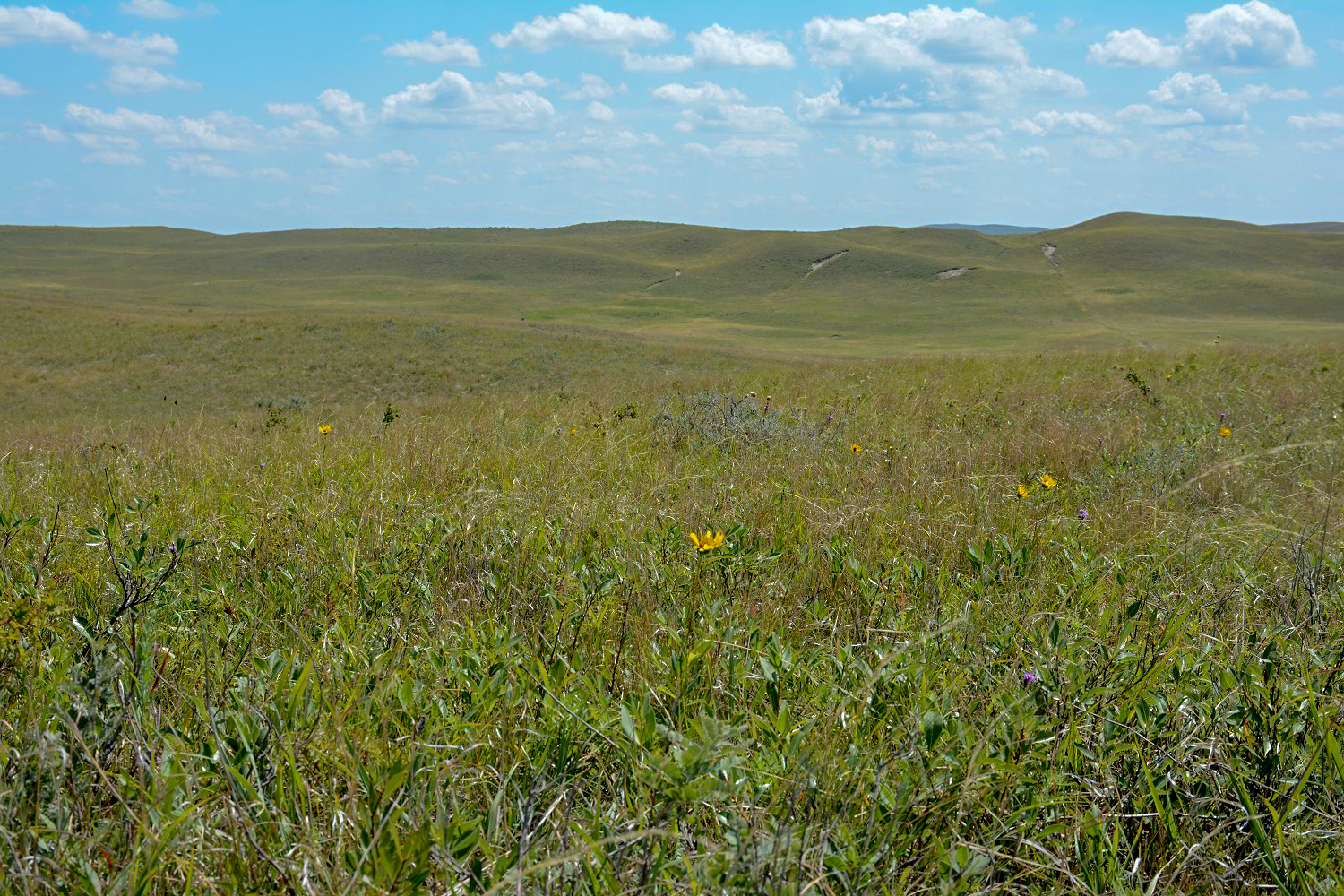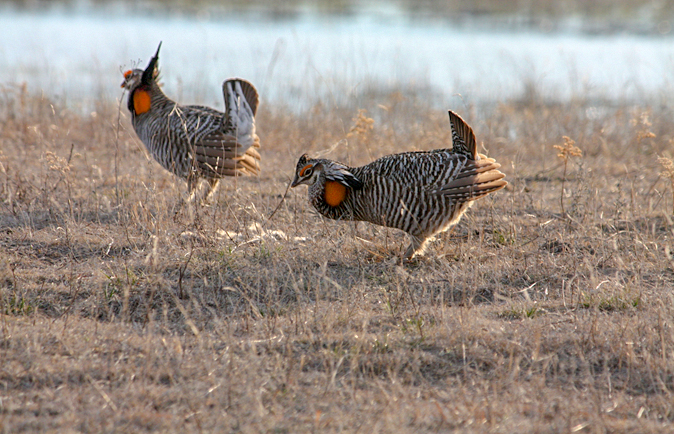Kayla Mollet, UNL SRMC Research Project CoordinatorMitch Stephenson, UNL Range Management Specialist

The Nebraska Sandhills is one of the most intact grasslands in the Great Plains of North America. The topography and soil substrate of the Sandhills has limited farming development and allowed for this region to be one of the prime native working landscapes for cattle production in the United States. While range managers use the Sandhill’s nutrient rich forage for grazing to support livestock, pride is also taken in the abundant wildlife and plant habitat this ecosystem provides. Although beef production often focuses on enhancing the productivity of nutrient-rich grasses for forage, this landscape can be simultaneously managed for important ecosystem services that benefit the land, its wild inhabitants, and the land manager.
What is Heterogeneity?
Heterogeneity can be defined as the variability in ecological properties or processes across a landscape at different spatial and temporal scales. This includes variability in vegetation height, plant species composition and density, bare ground cover, and biomass within different pasture areas. Heterogeneity is an important concept for conservation of grassland biodiversity and the promotion of multiple ecosystem services on the same land area. Ecosystem services include all benefits that society receives from a natural landscape. On rangelands, these benefits are many and include livestock production, water cycling, pollination, biodiversity, carbon sequestration, and recreation.

Why manage for Heterogeneity?
Heterogeneity is both inherent and disturbance-driven. Inherent heterogeneity is variability in vegetation cover or composition from landscape features such as topography, geology, and soil fertility. Disturbance-driven heterogeneity is a function of grazing, fire, or other management that influences a shift in the distribution of vegetation and ground cover across an area. Both inherent and disturbance-driven variability on a landscape can provide habitat requirements and ecological processes that benefit the ecosystem. For example, the greater prairie-chicken requires relatively small areas where vegetation is kept short by heavy grazing or haying for their mating lek sites (Figure. 2). However, the females benefit from nearby patches of vegetation with greater biomass and cover for nesting sites. Managing for this variability in vegetation structure in relatively close proximities improves the habitat for the prairie chickens.
Other examples of heterogeneity that are helpful to the larger ecosystem are often the result of what we consider “bad management”. Blowouts, for example, host the endangered and iconic sandhills species, blowout penstemon (Penstemon haydenii). This plant species has adapted to the blowout environment and requires the open and blowing sand to germinate and grow. Without blowouts, these vulnerable species cannot survive. Active blowouts have historically been an important part of the Sandhills landscape, when repeated fires and heavy grazing provided the disturbance needed to maintain populations of blowout penstemon. Management that completely eliminates these blowout environments in the Sandhills will reduce the habitat necessary for this species to survive.
In another example, yucca (Yucca glauca) provides a mutualistic relationship between the yucca plant and its pollinator host, the yucca moth. While yucca are sometimes viewed negatively on a landscape, they provide important ecological functions in the Sandhills environment. The tiny cream-colored yucca moth relies on yucca flowers for food, protection, and a place to lay its eggs. In return for food and lodging, the yucca moth is the sole pollinator of the yucca plant, insuring its reproduction. The co-evolution of the moth and the yucca tells a story of the interconnected Sandhills prairie. Studies that look at habitat heterogeneity and species diversity overwhelmingly find that the two go hand in hand. When we manage to maintain or increase heterogeneity, we increase biodiversity on the landscape.
What does heterogeneity look like in the Nebraska Sandhills?
Heterogeneity is inherent in Nebraska Sandhills topography. Topography influences variability in plant communities, biomass production, and soil moisture and organic matter content across rolling to steep dunes, dry to wet lowlands, and catsteps to blowouts. This variability in the landscape provides habitat for the more than 720 plant species found in this environment. Topography also influences cattle grazing behavior. Cattle distribution and grazing site selection often creates a gradient of grazing intensity from heavy (e.g., areas near water and lowlands) to light (e.g., areas far from water or dune topes). While we often strive to limit heavy grazing within a pasture by setting appropriate stocking rates, cross fencing pastures and rotating cattle, and increasing watering points to encourage a more even grazing pattern, there may be some benefits to maintaining areas within a pasture with both heavy and light grazing pressure. These efforts can ensure that native species that thrive at these extremes of disturbance-driven heterogeneity have a habitat to thrive. Introducing more heterogeneity into a grazing plan does not have to eliminate efforts that have improved rangelands in the past. Intentional targeted management for specific objectives may actually help us better understand our landscapes and manage for multiple plant communities and habitats that benefit both livestock production and the biodiversity in the Sandhills.
University of Nebraska-Lincoln
